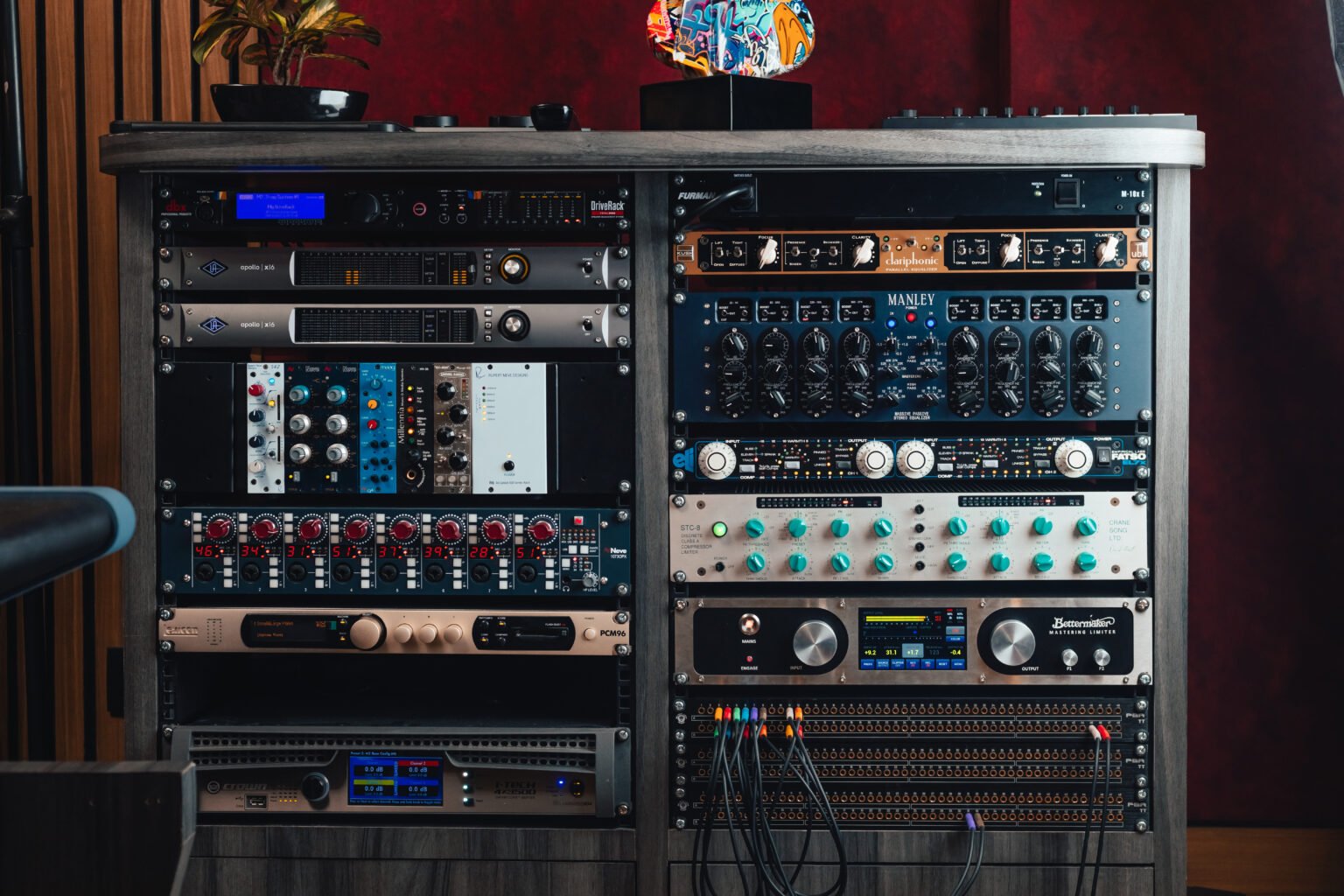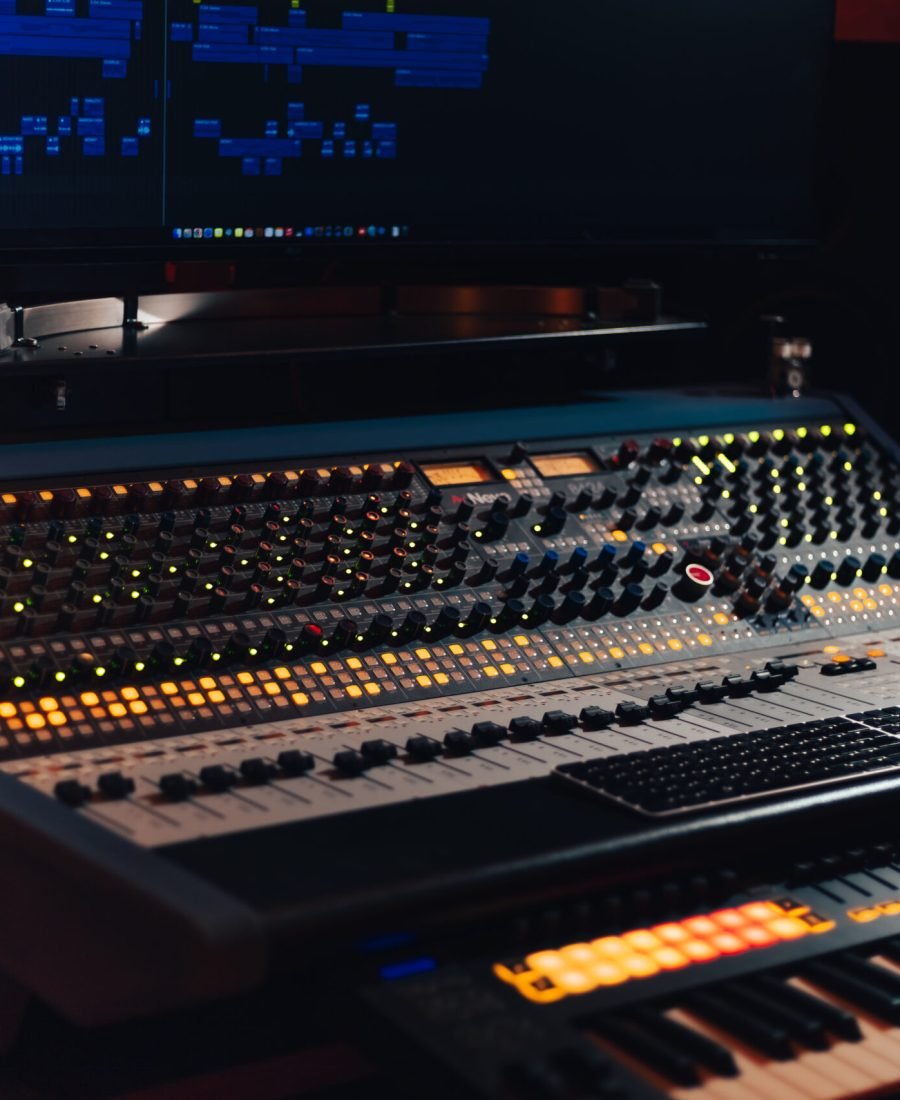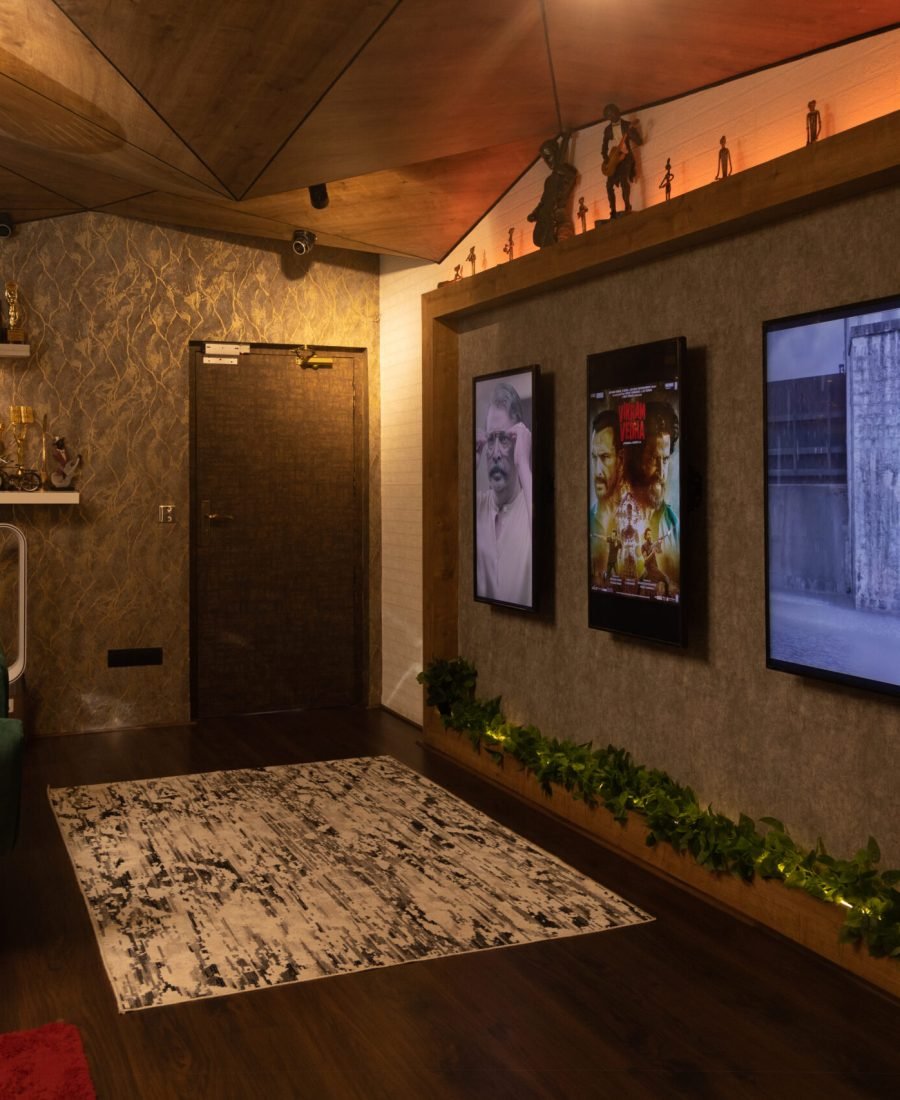Welcome To Psalter Record Inn




music is life, that's why our heart has beats
“My work defines who I am,” I declare. I anticipate that at a certain juncture in my career, I will seek answers to questions such as ‘Who am I?’ and ‘What am I good at?’ While some artists may endure sleepless nights grappling with a sense of unacknowledged talent, I am not among them.
welcome
Chamber
Den
Tower
Our Services
Upcoming Movies & Series
Meet Our Team

CD ANBUMANI
Senior Sound Engineer

RAMESH
Senior Sound Engineer

S AAKASH EDWIN
Sound / Recording Engineer
Meet Our Music Production Manager
K Mahima Chowdhary
Mahima working with SAM CS for the past three years, overseeing the entire management of PSALTER RECORD INN.

Equipment Details
ORCHESTRA

Analog Inputs:
16 x 20 simultaneous input/output channels. 16 x 16 analog inputs via DB-25 connectors. Analog Outputs:
16 x 16 analog outputs via DB-25 connectors.
Preamps:
8 Unison-enabled mic/line preamps for accurate modeling of classic preamp tones.
Unison technology allows the preamp to emulate the impedance and gain structure of iconic preamp models.
Conversion Quality:
High-quality analog-to-digital and digital-to-analog converters for pristine audio quality.
DSP Processing:
Onboard UAD-2 QUAD Core processing for running Universal Audio’s analog emulation plugins with near-zero latency.
Monitoring:
Dedicated monitor outputs and headphone outputs.
Talkback functionality for easy communication in the studio.
Digital Connectivity:
Dual Thunderbolt 3 ports for high-speed connectivity to the computer.
Cascade up to 4 Apollo interfaces or UAD-2 devices through Thunderbolt for expanding your I/O capabilities.
Console Software:
Control and monitor your Apollo interface with the UAD Console application.
Real-time control over various parameters, routing, and monitoring features.
Integration with DAWs:
Seamlessly integrates with major DAWs (Digital Audio Workstations) such as Pro Tools, Logic Pro X, Cubase, and more.
Add Your Tooltip Text Here
Design Philosophy: The Manley Massive Passive is a tube EQ known for its passive design and broad, musical curves. It’s often used to add color, warmth, and character to the audio signal.
Variable EQ Bands: It features a unique design with four parametric bands (two per channel) that can be adjusted for frequency, bandwidth, and gain. The shelf curves are wide and musical, allowing for broad tonal shaping.
Tube Circuitry: The Massive Passive uses high-quality tubes in its circuitry, contributing to its signature analog sound.
Design Philosophy: The Crane Song STC 8 is a stereo compressor known for its transparent and precise dynamics control. It’s often praised for its ability to gently shape the dynamics of a mix without coloring the sound.
Dual-Band Compression: One of its notable features is the dual-band compression, allowing independent control over the dynamics of the low and high-frequency bands.
Transformer-Coupled Output: It utilizes transformer-coupled output for a touch of analog warmth.
Digital and Analog Hybrid Design:
BetterMaker often incorporates a combination of analog and digital circuitry in their designs, providing the benefits of both worlds.
Transparent Limiting:
The BetterMaker Mastering Limiter is known for its transparent limiting capabilities, allowing for precise control over the dynamic range without introducing unwanted artifacts.
Stereo Linking:
It typically supports stereo linking for consistent control of the stereo image.
User-Friendly Interface:
BetterMaker products, including their limiters, often feature user-friendly interfaces with intuitive controls.
Digital Connectivity:
Some BetterMaker products provide digital connectivity options, allowing integration into digital audio workstations (DAWs) and modern studio setups.
Advanced Metering:
It may include advanced metering options to help users monitor and control their limiting settings accurately.
Automation and Recall:
BetterMaker devices often come with automation capabilities and preset recall features, enhancing the workflow for engineers and producers.
Reverb Algorithms:
The PCM 96 features a variety of high-quality reverb algorithms, providing a range of reverberation options for different applications.
Dual-Processor Architecture:
It utilizes a dual-processor architecture, allowing for complex and rich reverb processing without sacrificing audio quality.
Room, Hall, and Plate Algorithms:
The unit typically includes a selection of algorithms for simulating different acoustic spaces, such as rooms, halls, and plates.
Surround Sound Processing:
The PCM 96 is designed to handle both stereo and surround sound processing, making it suitable for a wide range of audio production scenarios.
Lexicon’s Reverb Technology:
Lexicon is known for its high-quality reverb technology, and the PCM 96 inherits the legacy of Lexicon’s renowned reverb processors.
User Interface:
The PCM 96 usually features a user-friendly interface with a digital display and intuitive controls for parameter adjustment.
Saturation and Tape Emulation:
The Neve 542 is primarily designed to impart the warmth, character, and saturation associated with analog tape recordings. It emulates the sound of vintage tape machines, adding harmonics and coloration to the audio signal.
500 Series Format:
The Neve 542 is a module that fits into a 500 Series rack, making it compatible with other 500 Series modules and allowing for flexible signal chain configurations.
Drive Control:
It typically features a drive control that allows users to adjust the amount of saturation or tape emulation applied to the signal. This control lets you dial in the desired amount of harmonic distortion.
Blend Control:
Some tape emulators, including the Neve 542, offer a blend or mix control. This allows you to mix the saturated signal with the dry signal, providing parallel processing and maintaining the original dynamics.
Level Control:
The module often includes a level control to adjust the output level after applying saturation.
Vintage Neve Circuitry:
The Neve 542 is built with the same quality and circuitry as the legendary Neve consoles, contributing to its reputation for delivering a classic analog sound.
Silk Circuit:
Some Neve devices, including the 542, may feature a Silk circuit. The Silk control introduces a form of harmonic saturation, enhancing the vintage coloration.
Inductor-Based EQ:
The Neve 542 might include an inductor-based EQ section that allows for further tone shaping.
High-Pass Filter:
Some tape emulators include a high-pass filter to control low-frequency content, especially useful when working with saturated signals.
TT (Tiny Telephone) Format:
The “TT” in the name suggests that it uses the Tiny Telephone (TT) patch bay format. TT connectors are a compact version of the standard 1/4-inch phone plug and are commonly used in professional audio patchbays.
Normalizing and Half-Normalizing Jacks:
Patchbays often feature normalizing and half-normalizing jacks, allowing you to easily change the signal flow between connected devices.
Front and Rear Panel Connections:
Patchbays typically have both front and rear panels, with front panel connections allowing easy access for patching and rerouting signals.
Durable Construction:
Professional patchbays are constructed with durability in mind, using high-quality materials and connectors to withstand frequent use in a studio environment.
Grounding and Signal Integrity:
A good patchbay should have effective grounding to maintain signal integrity and minimize noise in the audio signal path.
Labeling and Identification:
Patchbays often include labeling options to help identify the connected devices and signal paths, making it easier for engineers and producers to work efficiently.
Rack-Mountable:
Many patchbays are designed to be rack-mounted, allowing for easy integration into standard studio racks.









